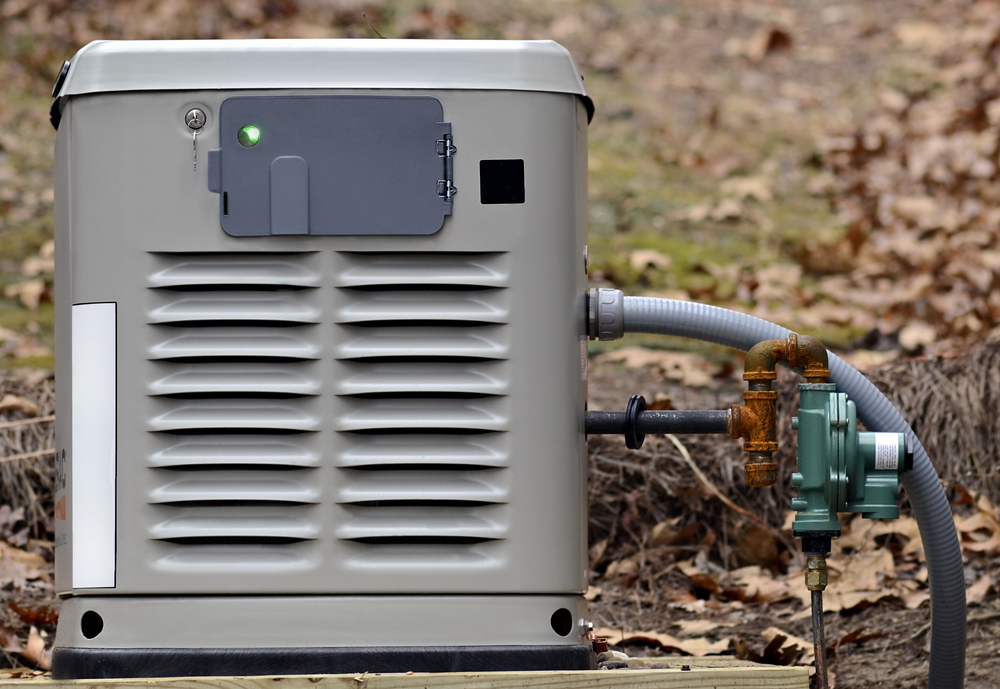“It usually takes me two or three days to prepare a good impromptu speech.” —Mark Twain
Generators are an emblem of good preparation skills. It doesn’t take a zombie apocalypse to throw your house off the grid; lightning damage or a PG&E outage can strike at seemingly any moment. The good news is that backup generator installation can be a very straightforward process once you’ve figured out what size of generator you need.
Your local electrician can help assess the generator wattage, obtain permits, install a transfer switch for a portable generator, or take care of the entire backup generator installation.
Backup Generator Sizing

From the bare necessities to complete power, there are generators for every need. Decide which appliances you want to run during an outage and make a note of the lighting and outlets that will need to work. Your electrician can then add up the power demand and recommend a category of backup generator for your home. Examples:
- 7kW to 12kW: A few lights, the refrigerator and microwave, a sump pump, and a few small appliances.
- 16kW to 22kW: Several rooms of lighting and the above appliances, plus the air conditioner, an electric range, and a television.
- 30kW or more: All indoor lighting and the above appliances, plus laundry, entertainment systems, and a few other larger appliances.
Where to Install a Backup Generator
Portable generators, of course, need to be kept outdoors. Permanent, standby generators also need to be away from house openings and secured in an appropriate location:
- Level surface: Most people use a flat concrete pad for backup generator installation, much like a pad where an air conditioner sits. Level gravel or ground can also work.
- In a safe area: Electrical codes require that your generator sits at least five feet from a window or door and away from flammable materials.
- Noise mitigation: Although new generators run more quietly, you should be aware of local noise ordinances. Try to place the equipment away from a neighbor’s window to avoid complaints.
Connecting a Generator to the Service Panel
For backup generator installation in Sonoma County, you should at least consult with an electrician about connecting to the main panel even if you are taking care of other aspects of the install yourself. Fixed generators require a permit and must be up to code.
If you just want an automatic transfer kit for a portable generator, that typically does not require a permit—but a licensed pro should wire it.
Backup generator installation must include connecting to the main service panel. Never should any type of generator be plugged into a wall outlet or connected to an appliance. Doing so can result in power line damage and serious injury to a utility worker repairing the outage.
Backup Generator Installation in Sonoma County
Storms, earthquakes, and electrical fires are not the only causes of outages. Whether you’re in an urban or rural environment, you can get peace of mind with a backup generator that turns on automatically whether there’s been a flood or a squirrel has chewed the local power lines.
For help choosing the right size and type and to get professional backup generator installation in the Santa Rosa area, contact us today.

